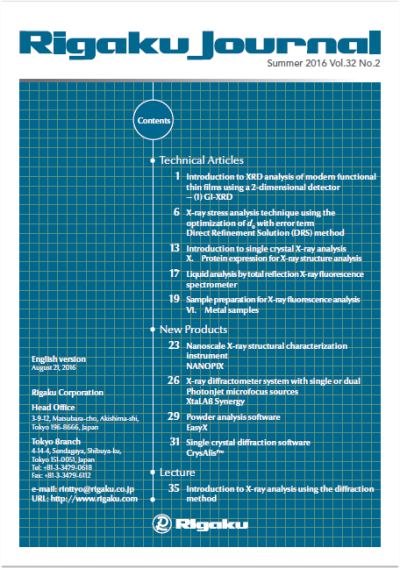A scientific discipline, which investigates crystal structures by means of the X-ray diffraction method, is called X-ray crystallography or simply crystallography. It originated in a discovery of the phenomena that X-rays are diffracted by crystals, and it has a history of more than one hundred years. Various analytical techniques based on X-ray diffraction have been developed along with the developments of X-ray sources, beam-collimating optics, detectors, mathematical algorithms and computers. X-ray diffraction techniques are used to determine the positions of atoms in a crystal with an accuracy in the order of 10⁻⁴ nm (1 nm=10⁻⁶ mm). They are also used for the identification of crystalline phases of various materials and the quantitative phase analysis subsequent to the identification. X-ray diffraction techniques are superior in elucidating the three-dimensional atomic structure of crystalline solids. The properties and functions of materials largely depend on the crystal structures. X-ray diffraction techniques have, therefore, been widely used as indispensable means in materials research, development and production.
This article has been written for the people who are beginning X-ray analysis of crystalline powder samples using the diffraction method. In X-ray powder diffraction measurements, so-called an X-ray diffraction pattern is recorded, in which many peaks called diffraction lines queue on the abscissa calibrating the diffraction angle. We often hear that it is much more difficult to understand what this diffraction pattern means when the pattern is compared, for examples, with infra-red spectra or the TG-DTA curve in thermal analysis. If we can understand how this diffraction pattern is generated when X-rays irradiate a crystal, it will become much easier to understand the relationship between the X-ray diffraction pattern and the crystal structural information. One purpose of this article is to elucidate the mechanism of X-ray diffraction by the crystal. The knowledge required in reading this article is limited to the mathematics of trigonometric function and the physical principle of the superposition of waves. Imagination and inference by readers will suffice to understand this article.

